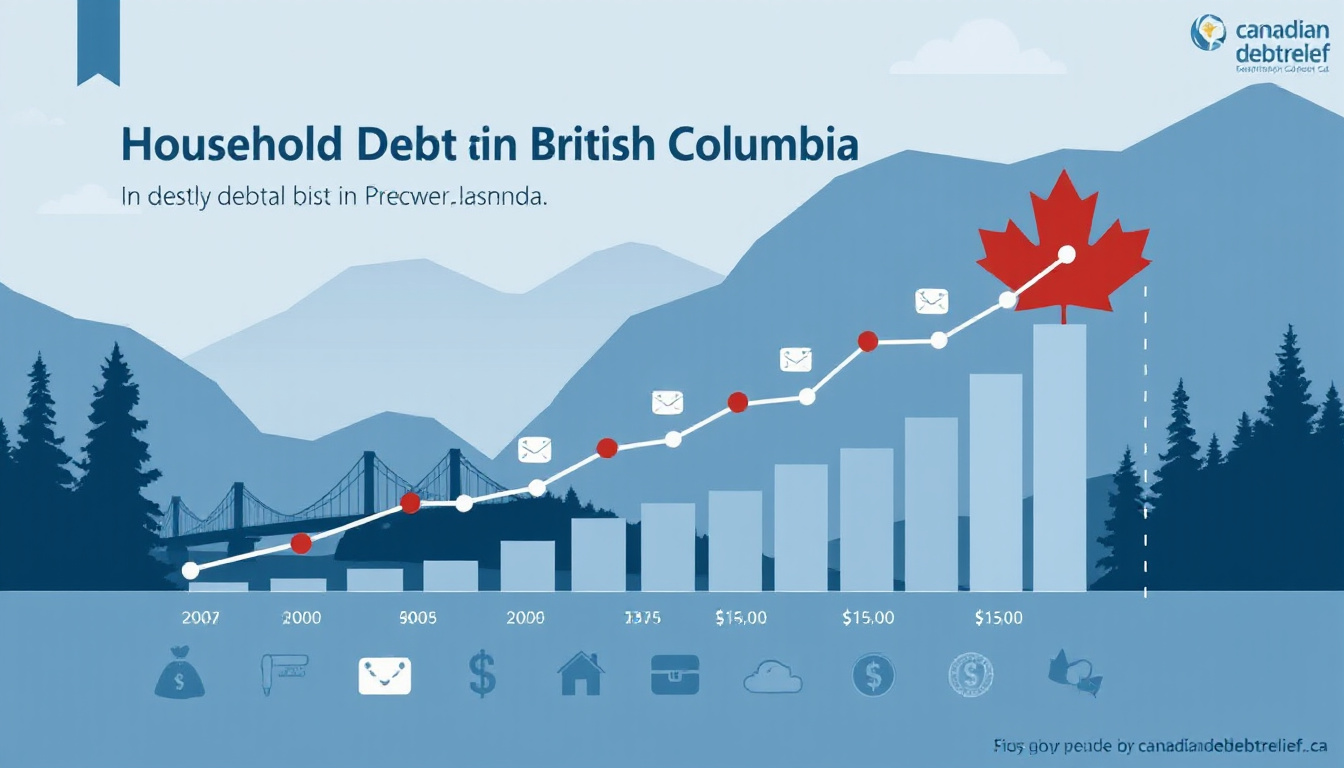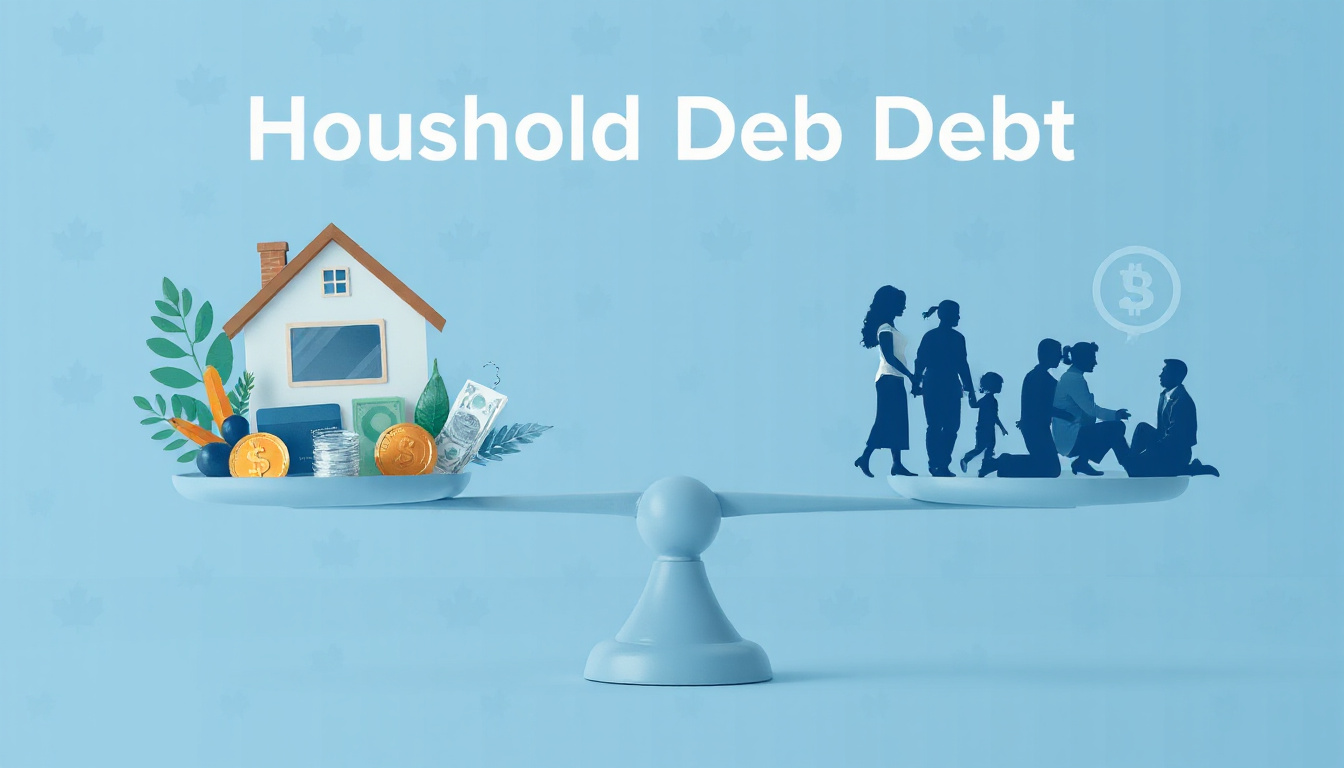Exploring the Average Household Debt in British Columbia: Trends and Insights

Tyler McAllister
Senior Finance Writer
As of 2023, the average household debt in British Columbia has reached approximately CAD 137,000, ranking among the highest in Canada. This statistic underscores the significant financial pressures facing residents in the province, contributing to an ongoing discussion about economic stability and personal finance. Recent trends indicate that despite fluctuations in the housing market and interest rates, British Columbians continue to grapple with increasing debt levels, influenced by factors such as rising living costs and stagnant wage growth.
In this post, we explore the implications of this rising debt on both individuals and the broader economy, drawing on insights from credible sources like Statistics Canada and the Bank of Canada.

Key Takeaways
- The average household debt in British Columbia has been steadily increasing over the past few years.
- Key factors influencing this rise include housing costs, interest rates, and consumer spending habits.
- Younger demographics are particularly affected by high levels of debt, impacting their financial stability.
- High household debt levels can lead to serious implications for economic growth and individual financial health.
- Monitoring household debt trends is essential for policymakers to address economic challenges in British Columbia.
Overview of Household Debt in British Columbia
As of 2023, the average household debt in British Columbia stands at approximately CAD 64,000, according to recent data from Statistics Canada. This figure indicates a substantial increase over the past decade, reflecting rising housing costs and consumer spending habits in the province. The growing dependence on credit has raised concerns among financial experts regarding the sustainability of this debt. Additionally, nearly 42% of British Columbia residents reported being unable to pay off their debt within a year, emphasizing the severe financial pressures faced by many households. Cities like Vancouver, with its high real estate prices, significantly contribute to the rising average debt levels. These statistics not only highlight a critical aspect of financial health in British Columbia but also point to the need for potential debt relief solutions.
Trends in Average Household Debt Over Recent Years
The average household debt in British Columbia reached approximately $77,000 in 2023, reflecting a significant increase compared to previous years. According to data from Statistics Canada, this trend shows a continuous rise in household borrowing primarily due to escalating housing costs and increased reliance on credit. Over the past five years, the average debt level in British Columbia has surged by around 15%, indicating a growing financial burden on residents. As the economy evolves, understanding these debt trends becomes crucial for policymakers and financial advisors to address the implications on personal finances and overall economic stability.
‘The greatest danger in times of turbulence is not the turbulence; it is to act with yesterday’s logic.’ — Peter Drucker

Factors Influencing Household Debt Levels
In 2023, the average household debt in British Columbia reached approximately CAD 78,000, marking it as one of the provinces with the highest household debt levels in Canada. This staggering figure reflects the growing financial burdens that families face due to rising living costs, housing prices, and increasing interest rates. According to recent statistics from Equifax, households in British Columbia are carrying higher debt loads than the national average, with mortgages contributing significantly to this total. Factors such as the province’s expensive real estate market and high consumer spending habits continue to influence these rising debt levels. As the Bank of Canada raises interest rates to combat inflation, the financial strain on British Columbians may intensify, propelling many to seek debt relief solutions.
Implications of Household Debt for Individuals and the Economy
As of 2023, the average household debt in British Columbia is approximately $80,000, which includes various forms of credit such as mortgages, credit cards, and personal loans. This high level of debt has significant implications for both individuals and the broader economy. Individuals facing high debt levels may struggle to maintain financial stability, impacting their ability to save for retirement or invest in other opportunities. Economically, elevated household debt can lead to reduced consumer spending, as households allocate a larger portion of their income to debt repayments. According to the Canadian Bankers Association, this could eventually slow down economic growth. Maintaining healthy financial habits and seeking debt relief options is essential for residents of British Columbia to mitigate these challenges and contribute positively to the province’s economic landscape.
